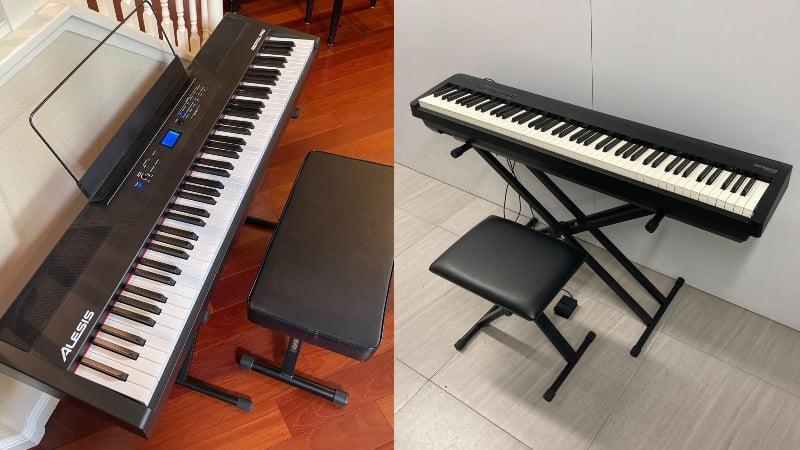I’m not going to lie. Writing this Alesis Recital Pro vs Roland FP 10 comparison was pretty tough. After all, both pianos offer a wide range of different features that are ideal for beginners.
However, by the end of this in-depth comparison, I found that the Alesis Recital Pro could just be the better investment. In terms of tone, there aren’t too many models in its price range that can compare, though the Roland FP-10 definitely comes close. But the real reason I found the Alesis Recital Pro to be more useful is that it comes with more playing modes, effects, and a better sound system than the Roland FP-10.
Roland is one of the most well-known brands for keyboards, and it was really hard to find any downsides to the affordable FP-10. However, it is the more expensive model, and while it did come with some premium features, the Alesis Recital Pro offered more value for the money.
Alesis Recital Pro vs Roland FP-10: Comparison Chart




Last update on 2025-12-13 / Affiliate links / Images from Amazon Product Advertising API
Alesis Recital Pro vs Roland FP 10: The Differences
To determine the superior option between the two, I decided to compare each of the features up against each other. And when testing out the tone, feel, piano features, and sound system of these pianos, the Alesis Recital Pro won out with a score of 3-2.
As you can tell by the score, this was a very tight comparison. However, because of the extra piano features and superior sound system, the Alesis Recital Pro was the winner at the end of it all.
Tone
The winner: Tie
When I got my hands on both of these pianos, it was easy to assume that the Roland FP-10 had better tone because of the SuperNATURAL Piano Sound equipped on the piano. However, after conducting a thorough ear test, I found that the tone quality was closer than expected. On top of that, both pianos have the same number of voices, so it was pretty hard to choose a winner when it came down to tone.
+ Tone Generation
The Roland FP-10 uses the SuperNATURAL Piano Sound tone generator. This is a fancy term to describe the samples they used in this piano. So, while it sounds like a sophisticated tone generator, it’s basically sampling, which is what the Alesis Recital Pro uses as well.
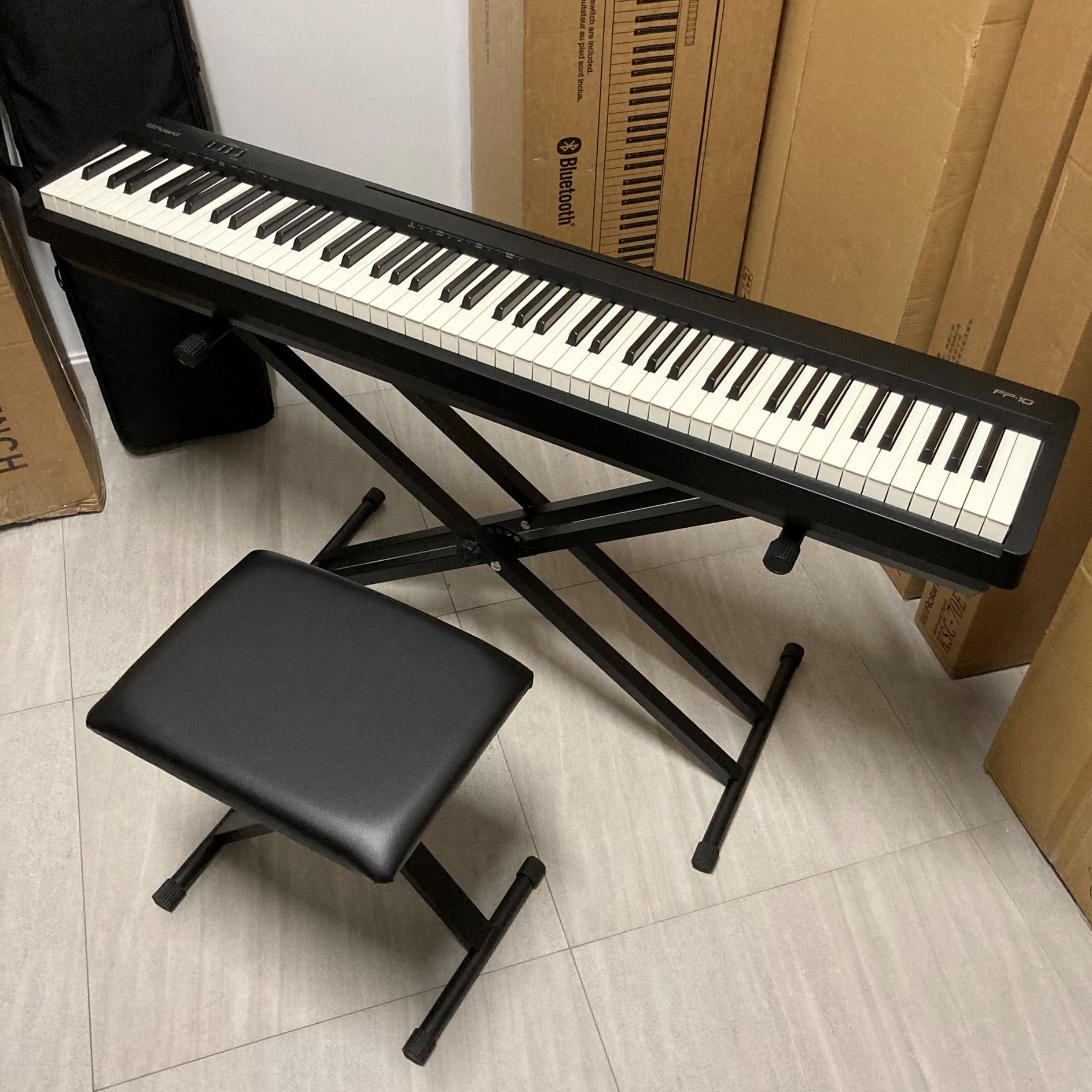
To be honest, the Roland FP-10 had a slight edge when it came down to tone quality, but only for the piano voices. For some reason, it might be that they used better equipment or loaded better samples, but the piano sounds on the Roland FP-10 were slightly clearer and brighter than the Alesis Recital Pro, which is something to expect from the more expensive model.
However, it was only with the piano sounds that the Roland FP-10 excelled. I was slightly let down by the other tones on the piano such as the organ, bass, and synth sounds. In fact, the Alesis Recital Pro seemed to have better samples for their strings and other voices compared to the Roland FP-10.
+ Sound Library
Both of these digital pianos have 12 voices built-in. So, you will get a fair amount of tonal variety with these options, but they aren’t loaded with too many sounds that will distract beginners. When looking for a piano for beginners, it’s highly recommended to choose options without any distracting tones and voices. While it might be nice to have drum and SFX voice packs, these can distract you from your lessons.
While both pianos only have 12 voices, each of the voices are top-quality and very useful. Both Roland and Alesis decided to focus on quality over quantity with the tones of their pianos, which is why despite the low number of voices, pianists find all of them incredibly useful and beneficial.
With both pianos, you can play a wide variety of musical styles. So, whether you’re training to be a classical pianist or to play in a band as the keyboardist, both of these options provide enough versatility to handle those styles.
Feel & Playability
The winner: Roland FP-10
In terms of feel , the Roland FP-10 provided a more realistic experience. With a more sophisticated hammer action system, it easily beat out the Alesis Recital Pro in this category. However, in terms of key texture, I was disappointed by both pianos, but since they are the entry-level options of both brands, it was easy to forgive.
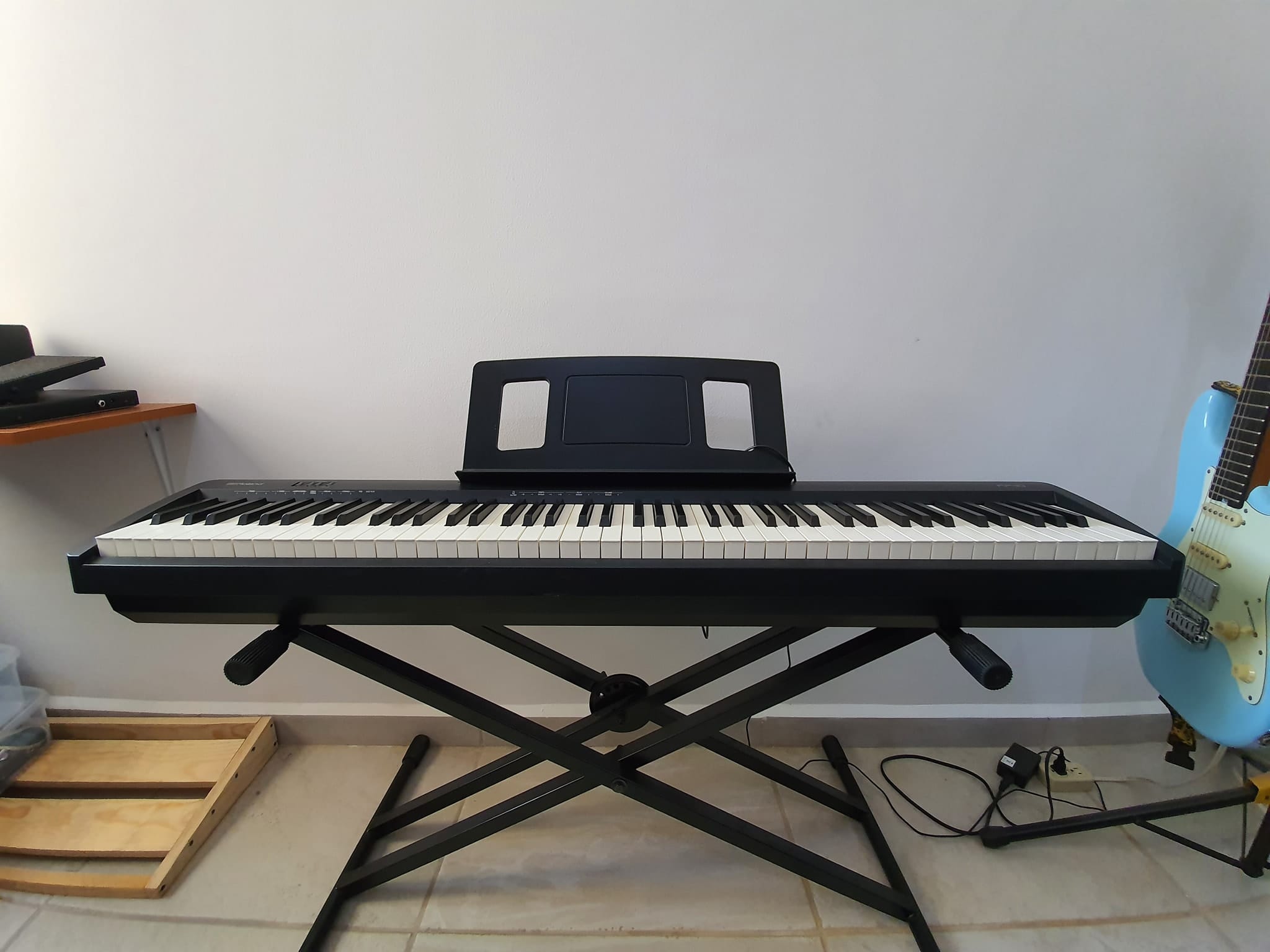
+ Hammer Action
The Roland FP-10 uses the PHA-4 Scaled Hammer Action system. With this piano, you get heavier keys on the low end of the keyboard and lighter keys on the higher end. This is meant to mimic the feel of a real acoustic piano and it does a great job at that. Granted, this system isn’t as sophisticated as Yamaha’s GHS or the ones on more premium pianos, but it is surprisingly good for a beginner’s entry-level digital piano.
If I were to find one complaint about the hammer action of the FP-10 is that it’s pretty loud, so there’s a slight clicking noise when you press down on the keys. However, compared to the Alesis Recital Pro, the Roland FP-10 has significantly better hammer action.
The Alesis Recital Pro only uses fully-weighted keys. So, while the weight is fairly close to what you get on an acoustic piano, it isn’t graded. With the Alesis Recital Pro, the weight of the keys is uniform throughout the whole keyboard. This isn’t exactly a dealbreaker, but it is far less realistic than the hammer action on the Roland FP-10.
+ Key Texture
When it came down to key texture, neither of these pianos had anything to show for it. Both pianos come with plastic and glossy keys, so they will definitely feel different from an acoustic piano. If you’re an experienced pianist, you are probably accustomed to the slight details in the texture of real wooden keys, so when playing either the Alesis Recital Pro or Roland FP-10, you’ll instantly notice the plastic feel of the keys.
Since this is a beginner’s piano, not much attention was paid to the key texture. After all, most beginner pianists won’t notice the difference between plastic and wooden keys anyway. However, once you get better and more accustomed with the instrument, these slight details make a huge difference in your playing.
Piano Features
The winner: Alesis Recital Pro
One of the areas where the Alesis Recital Pro truly stood out is with its different piano features. It has more playing modes than the Roland FP-10, which provides more versatility, especially when paired with the wide range of effects and superior polyphony.
+ Playing Modes
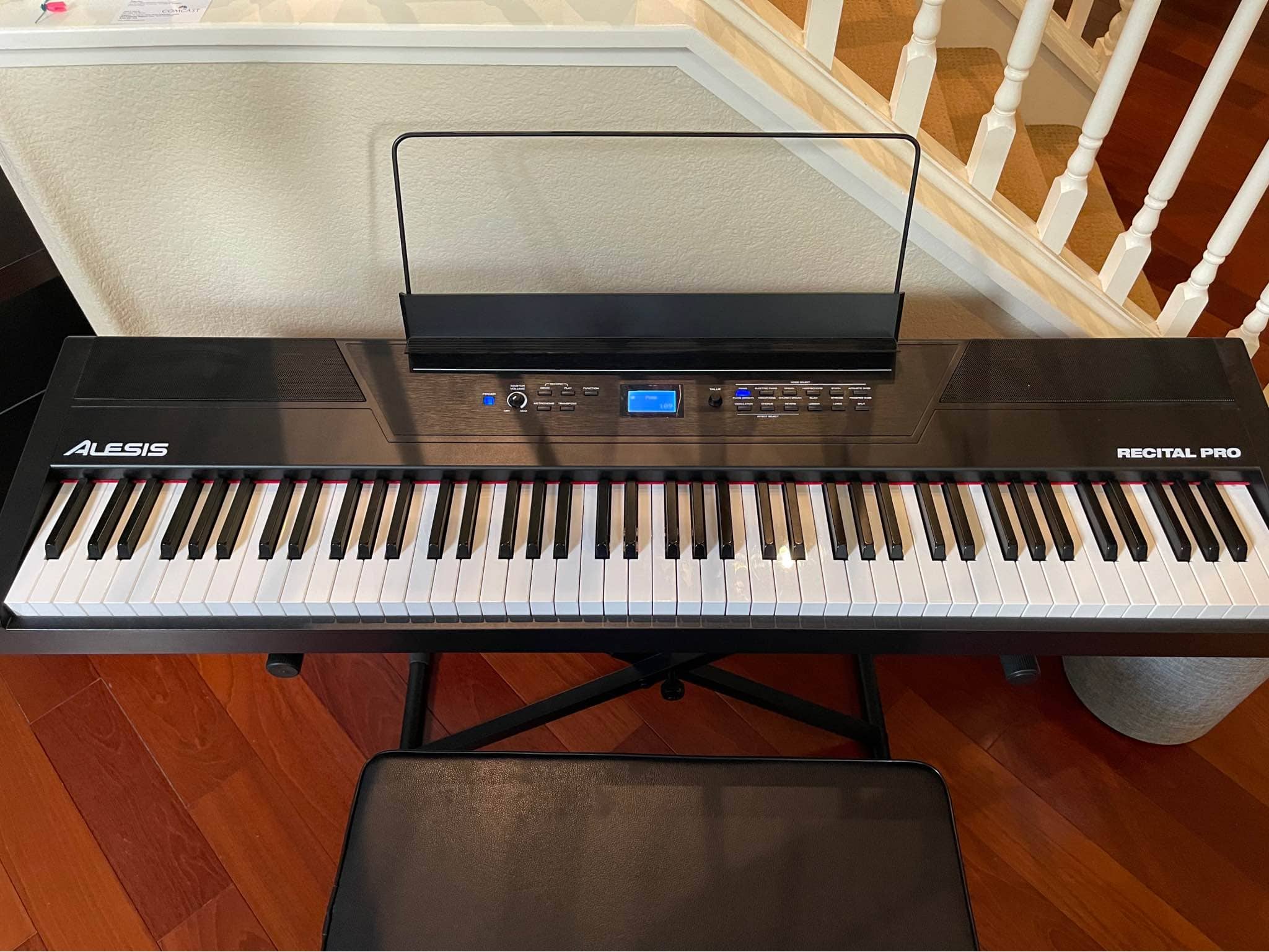
The different playing modes on the Recital Pro is one of the piano’s highlights. With the Recital Pro, you get three different playing modes: split, dual, and duo. These modes have different names on different pianos such as layering for dual mode and twin for duo mode. While they have different names, they still offer the same functions and give the player a whole lot of versatility.
For beginners, the most useful of these modes is dual or twin mode. This mode is also present on the Roland FP-10 and is designed to give you a smoother experience during piano lessons. This mode divides the piano into two mini keyboards with the exact same sound and timbre. So, you and your piano teacher can play alongside each other at the same time without having to worry about crossing over to the other side.
Dual mode or layering mode is also present on both pianos. With this mode, you can load two different voices at the same time. So, whenever you press down on a key, you trigger two sounds instead of just one. You can combine just about any two voices on these pianos, giving you a very unique tone. This is great for experimenting and playing the accompaniment part for other musicians.
The last mode on the Recital Pro is split mode. This is a feature reserved for more advanced models, so you won’t find it on the Roland FP-10. In fact, I was very pleasantly surprised to learn that the Recital Pro came with split mode. With this mode, you can load one voice on the left side and one voice on the right side of the piano. This gives the illusion of playing two instruments at the same time and has a lot of practical uses when jamming, rehearsing, or even playing live shows.
+ Effects
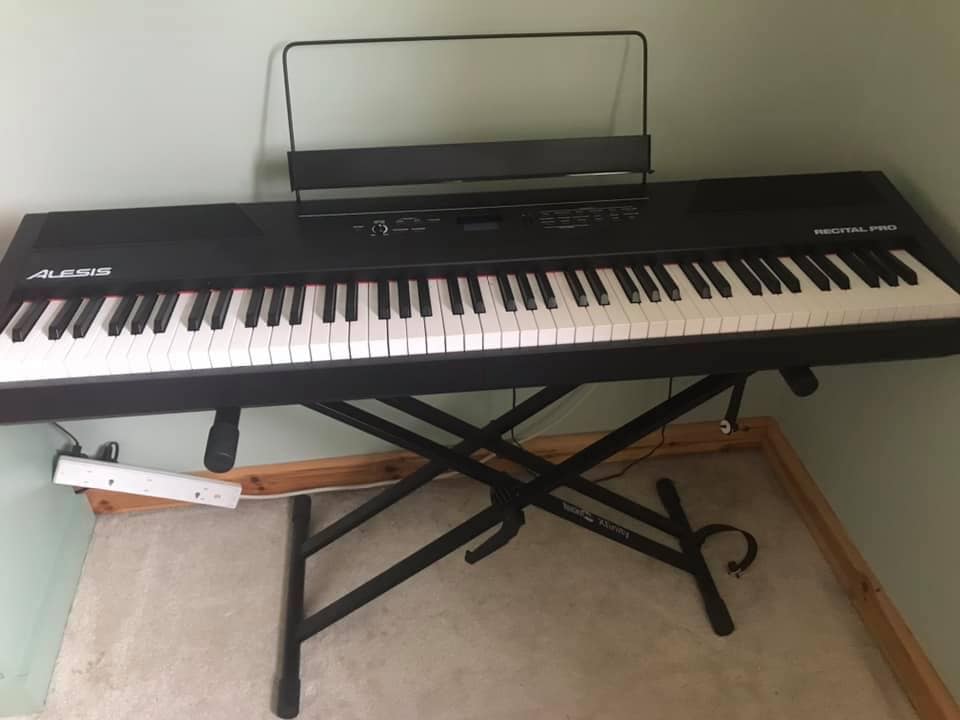
The Roland FP-10 only gives you the freedom to tweak the brilliance and add ambience to the voice. This offers some versatility, but if you’re a beginner, there’s a high chance you won’t be tweaking with these settings anyway. On the flip side, the Alesis Recital Pro came with three different effects that are useful for both beginners and novice students.
The Alesis Recital Pro comes with chorus, reverb, and modulation effects. These are all the basic effects you’ll need to tweak your tone to just the right settings that you’ll need for a variety of musical styles. For example, reverb adds body to your tone, chorus can give you a unique “wobbly” sound, and modulation is very useful for adding additional texture to your tone, which comes in handy when playing with a band that occupies a lot of sonic space.
+ Polyphony
The Alesis Recital Pro also has superior polyphony compared to the Roland FP-10. With 128-note maximum polyphony, the Recital Pro easily beats out the FP-10 that only has 96-note max polyphony.
As a beginner, you don’t exactly need large maximum polyphony, however, it’s still a useful feature to have. With the 128-note polyphony of the Recital Pro, you get to plan dense and large chords with the sustain pedal on, even if you’re using layering mode. While you can handle big chords on the FP-10 as well, it doesn’t have as much versatility as the Recital Pro.
Sound System
The winner: Alesis Recital Pro
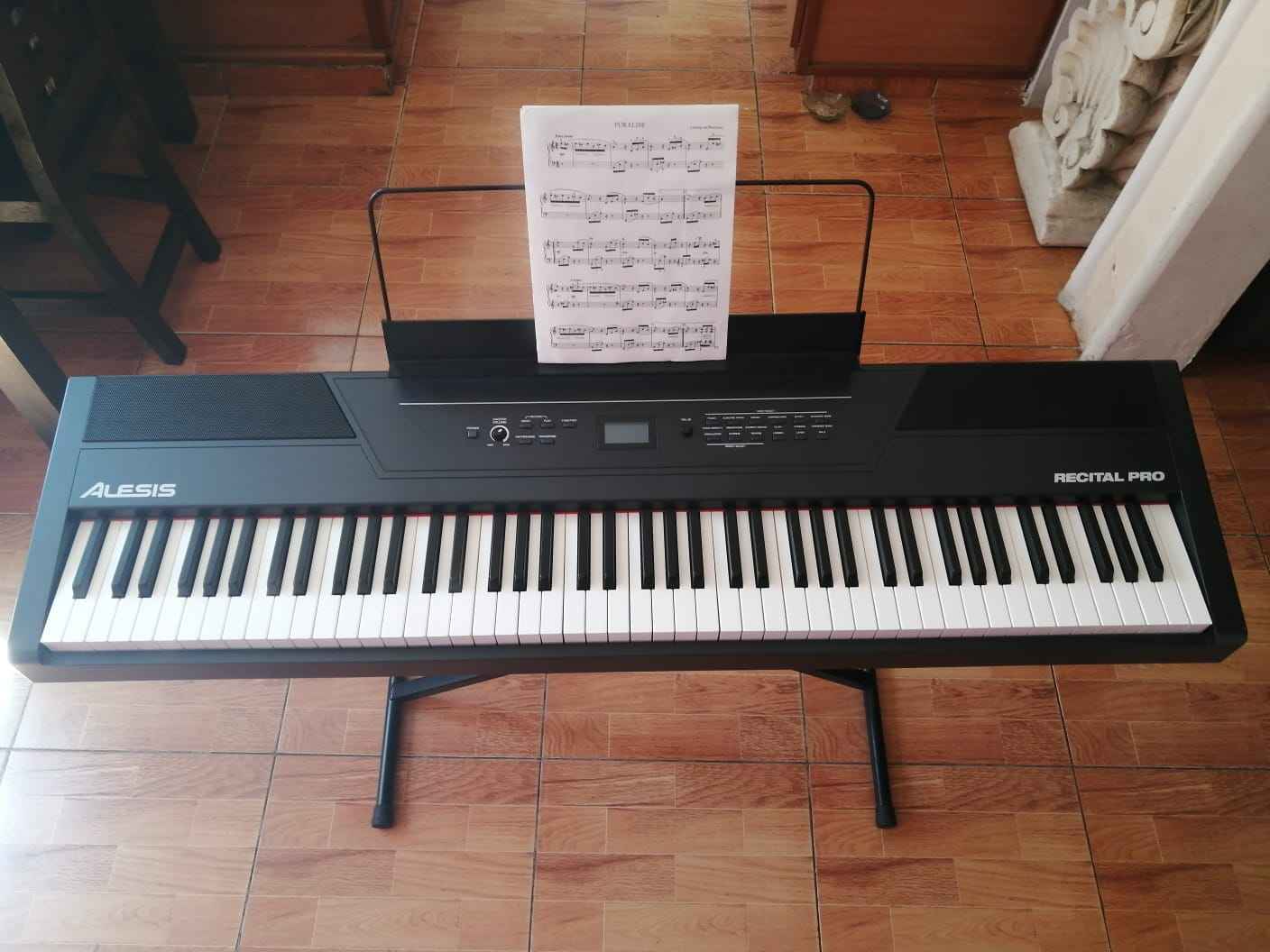
You may have noticed that these pianos are currently tied at 2-2.
So, what feature was the decider?
When testing out these two pianos, the main reason I chose the Alesis Recital Pro as the winner is the superior sound system. Granted, the speakers of the Recital Pro aren’t anything new, they are just standard 6W amplifiers and speakers. However, I was honestly very surprised at the sheer sound quality that came out of these speakers.
While I couldn’t find that much specific information on the FP-10s speakers, the piano also has two 6W amplifiers. However, when testing out the sound quality, I noticed that the speakers were not as good as the Recital Pro. The difference wasn’t too large, but it was big enough for the Alesis Recital Pro to take the final point in this comparison.
Alesis Recital Pro vs Roland FP-10: The Similarities
These pianos are very similar since they are both portable digital pianos designed for beginners. They both have full-size and weighted keyboards and are equipped with 12 voices in their sound library. So, in terms of sound and feel, these two pianos are very similar, with only slight differences in the fine details.
Another feature shared by these two options is connectivity. Both of the pianos can connect to headphones for private rehearsals and to external sound systems for performances. On top of that, they both have USB-MIDI connectivity. So, you can hook up these pianos to your computer and use them to control virtual instruments or even to go through piano learning apps.
The Roland FP-10 does offer BlueTooth connectivity, which the Recital Pro doesn’t, which is the only main connectivity difference and is about what is expected from the more expensive model. So, at the end of the day, I also chose the Alesis Recital Pro as the winner because it offers about the same quality and functionality as the Roland FP-10 but at a much more affordable price.
Quick Rundown of the Alesis Recital Pro
- A Digital Piano That’s Tailored to You - Feature-packed Electric keyboard with 88 premium full-sized weighted hammer action keys with adjustable touch response to suit your preferred playing style
- Premium Sounds - 12 voices (Incl. Acoustic Piano, Electric Piano, Organ, Synth, and Bass), built-in FX: Chorus, Modulation, Reverb, and two built in 20W speakers for clear, room-filling sound
- All The Right Connections - ¼” sustain pedal input (pedal not included), ¼” stereo headphone output for private practice and stereo outputs for connection to speakers / amplifiers
- Play the Keyboard Wherever You Go - Power via the included power adapter or 6 D cell batteries (not included) for professional piano performance anywhere
- Powerful Educational Features - Standard, split, layer, record and lesson modes with 128-note max polyphony and Skoove 3 month premium subscription for expert interactive online piano lessons
Last update on 2025-12-13 / Affiliate links / Images from Amazon Product Advertising API
Quick Rundown of the Roland FP 10
- Meet the FP-10, the starting point of the acclaimed FP-Series from Roland which has defined how a digital piano should sound and feel.
- Rich, responsive tone from Roland's renowned SuperNATURAL Piano sound engine
- Keys feel like a real acoustic piano, with expressive touch and ivory feel
- Headphones output and quiet keyboard action let you enjoy playing at any time without disturbing others
- Powerful onboard speakers reproduce your playing beautifully
Last update on 2025-12-14 / Affiliate links / Images from Amazon Product Advertising API
Product Videos
Related Articles to Alesis Recital Pro
- Alesis Recital Pro vs Williams Legato III: Discover the Best Piano for Your Home
- Alesis Recital Pro vs Roland Go Piano 88 Comparison: Which Is The Best Portable Digital Piano?
- Alesis Recital Pro vs Yamaha NP32 Comparison: Discover the Best Piano for Your Home
- Kawai ES110 Vs Alesis Recital Pro: Should You Shell Out for the Kawai ES110?
- Alesis Recital Pro vs Prestige Comparison: Choosing the Best Entry-Level Alesis Piano
- Alesis Recital Pro vs Casio CDP-135: Which Is the Best Beginner’s Digital Piano?
- Alesis Recital Pro vs Roland FP-30: Finding the Best Digital Piano on a Budget
- Alesis Recital Pro vs Casio CDP-S150 Comparison: Which Is The Best Portable Digital Piano?
- Alesis Virtue vs Recital Pro: Which Piano Offers The Most For Beginners?
- Alesis Recital Pro vs Casio PX 160: Which Piano Comes Out On Top?
- Alesis Recital Pro vs Korg B2 Comparison: Which Digital Piano Should You Get?
- Alesis Recital Pro vs Williams Allegro 3 Comparison: Which One Is Worth Your Money?
- Alesis Recital Pro vs Yamaha P125 Comparison: Which Is The Best Portable Digital Piano?
- Alesis Recital vs Alesis Recital Pro: Should You Invest In The Recital Pro?
- Alesis Recital Pro vs Yamaha P45: Which Should You Get As Your First Piano?
- Donner DEP-20 vs Alesis Recital Pro Comparison: Two Great Pianos Designed for Beginners
- Alesis Prestige Artist vs Recital Pro: Which Is the Best Alesis Piano for Beginners?
- Yamaha P71 vs Alesis Recital Pro: Which Digital Piano is the Best Option for Beginners?
Related Articles to Roland Fp 10
References
- Recital Pro 88-Key Digital Piano with Hammer-Action Keys: https://www.alesis.com/products/view/recital-pro
- Roland FP-10 Digital Piano: https://www.sweetwater.com/store/detail/FP10BK–roland-fp-10-black
Lulacruza is an electronic folk duo operating at the junction of the hypermodern and the ancient. Our music weaves together hypnotic female singing, South American folk instruments and electronic processing, while channeling pulsating waves from the source of creation.
Lalucruza is also a community where you can connect with other music lovers to collaborate, exchange ideas and share knowledge. A platform for who wants to learns the basics of playing piano, guitar, drum masters’ technique, etc.. is the premise of our website.
